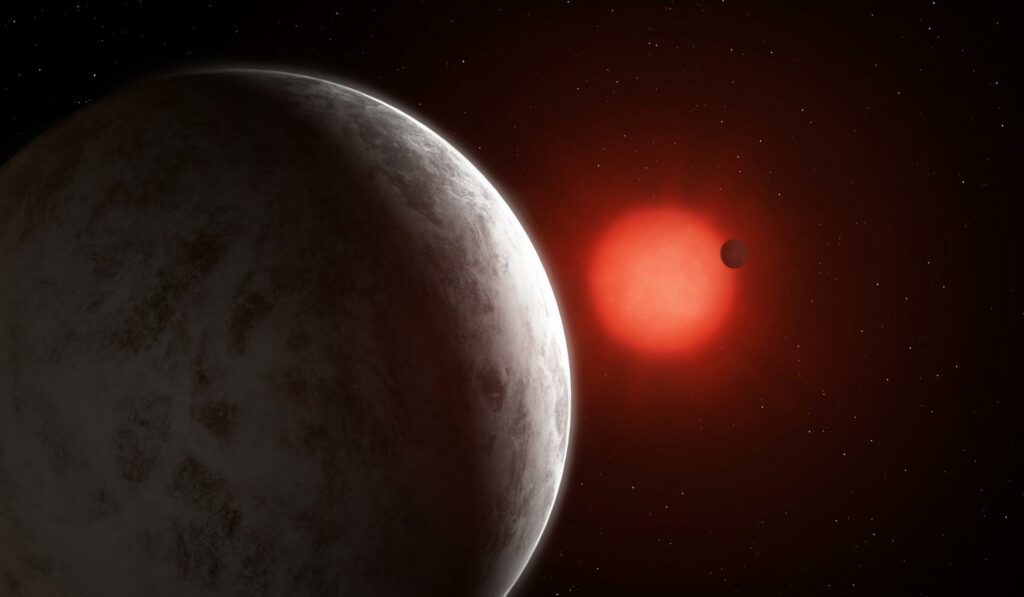An international team of researchers has announced the discovery of a previously unknown super-Earth, designated TOI-244b. It has an unusually low density.

The discovery was made during the study of data collected by the TESS space telescope. It managed to record periodic decreases in the brightness of the red dwarf TOI-244. During subsequent observations, astronomers confirmed that they were caused by transits of an exoplanet orbiting it.
The newly found exoplanet is a so-called super-Earth. Its radius is 1.52, and its mass is 2.68 times the radius and mass of the Earth. The orbit of the exoplanet passes at a distance of about 0.056 AU (7.5 million km) from its star, it makes one orbit in 7.4 days. The equilibrium temperature of its surface is 185 °C.
Calculations show that the average density of TOI-244b is 4.2 g/cm3. This indicator is noticeably less than that of most other known super-Earths. The researchers suggest that the low density of TOI-244b is associated with the presence of a significant amount of volatile elements in its composition. In their opinion, in the future this world will become an excellent target for new observations, the purpose of which will be to determine its atmospheric characteristics.
You can also read about how artificial intelligence found a planet outside the Solar System.
According to https://phys.org
Follow us on Twitter to get the most interesting space news in time
https://twitter.com/ust_magazine

